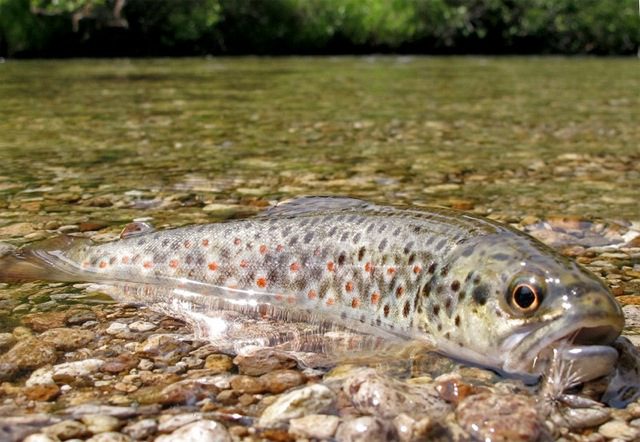Wednesday May 14, 2025

Common names: Brown Trout
Scientific name: Salmo trutta
Native range: Europe, West Asia, North Africa
Status: Stable (invasive in some introduced regions)
Habitat: Cold freshwater
Brown trout (Salmo trutta) were introduced to the United States through stockings in Michigan in 1883 by the U.S. Fish Commission. Their natural range extends from northern Norway to North Africa, but they have been widely introduced across North and South America and parts of Asia and Africa. Due to their adaptability, they are invasive in many non-native habitats, often outcompeting local fish species for resources. Popular among anglers, brown trout thrive in cold freshwater streams, rivers, and lakes. Brown trout exhibit multiple ecotypes and considerable variation in coloration. However, they are generally characterized by a narrow head, a slender body with red spots often surrounded by pale “halos,” and a lack of spots on the caudal fin. The roof of their mouth may display vomerine teeth arranged in a distinctive zig-zag pattern. They have a diverse diet that includes benthic invertebrates, crustaceans, and other fish. Natural predators of brown trout include pike, char, and walleye. In landlocked environments, they typically take 2–4 years to reach maturity and spawn in streams during late fall and early winter.
Fun Fact: Brown trout have highly diverse genetics, making them one of the most diverse vertebrates.
